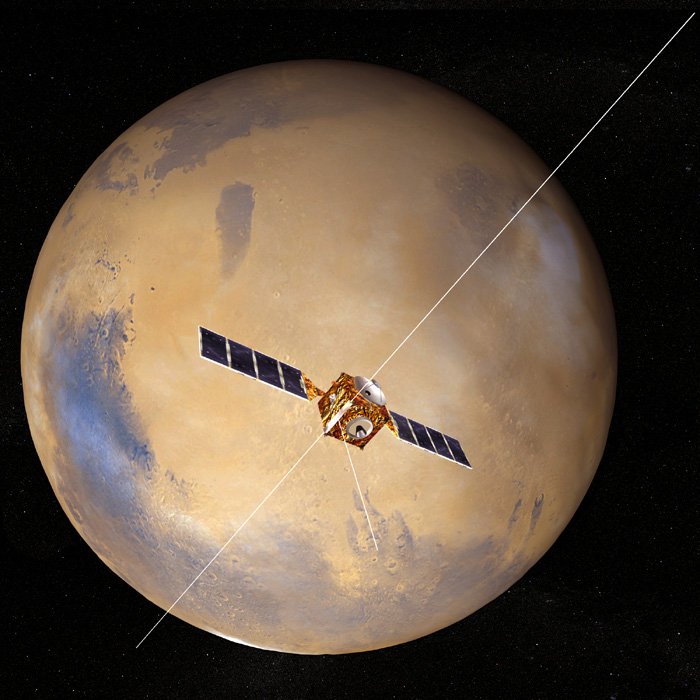During Phobos flyby on 29 December, @AsteroidEnergy asked a question via Twitter:
@esascience @esaoperations Can you tell us why you couldn’t use MARSIS at 45 km? Dipoles don’t need to be pointed (much).
— Asteroid Initiatives (@AsteroidEnergy) December 30, 2013
It took some time (due to holidays – Happy New Year!!!), but we now have a reply from ESA’s Olivier Witasse, MEX Project Scientist at ESTEC.
The radar was originally designed solely for the observation of Mars. For safety reasons, the radar software blocks operations when the target is closer than 240 km. In the case of past Phobos flybys, because the distance is sometimes lower than that, the radar was therefore re-configured to operate at close distance by bypassing protections preventing the opening of the receiver before a certain time from transmission had elapsed.
Although not without risk, this procedure was thoroughly tested and successfully used throughout several Phobos flybys. The operational distance is now *** 175 km ***. Therefore, we usually switch on MARSIS when the minimum flyby distance is around 175-200 km.
See you in 2014!
– Olivier





Discussion: 4 comments
Hi,
What are the risks about using MARSIS too close from Mars or any other object (Phobos…) ? Is it related to the reflected RF power which could damage the radar receiver becasue of the (relatively) small distance?
What are the advantages of using a radar instead of pictures (in the case we are speaking about, i.e. Phobos)?
Was MARSIS used for doing some science with Deimos in the past?
Thanks!
Is the “safety” for the safety of the receiver (i.e., having the receiver gated off when the transmitter is on)?
Many questions!
> What are the risks about using MARSIS too close from Mars or any other object?
Answer (with the help of the MARSIS Principal Investigator Roberto Orosei): MARSIS has an automatic gain control system preventing receiver saturation. Thus, distance is not an issue, also because Phobos is a relatively weak radar reflector due to its shape and size. The problem is essentially one of timing: the MARSIS pulse is 250 microseconds long, corresponding to a two-way light-time distance of 37.5 km. Because of the very short distance of Phobos during this flyby, it was deemed unfeasible to operate MARSIS in a safe way.
> What are the advantages of using a radar instead of pictures
Answer: radar and camera are two completely different instruments. Check what is done on Earth with radars. In the case of Marsis, we can get information on surface properties (roughness), and composition below the surface. Basically a radar gives you more information on the physical properties of a surface and of a subsurface. From an image, you study the geological context, the surface altitudes, rotation of the moon etc…
>Was MARSIS used for doing some science with Deimos in the past?
Answer: no, Deimos is really too far for the radar. The range for the radar is: 175-1200 km typically. Deimos is always further than 9000 km.
Thanks for your answer and detailled explanations!